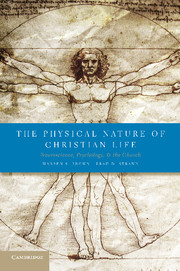Part II - The Formation of Persons: Retrospect and Prospect
Published online by Cambridge University Press: 05 July 2012
Summary
REVIEW
In Part I of this book we laid the ground work for a more wholistic, less dualist, understanding of the nature of persons. In Chapter 2, we briefly described the history of the idea that human beings are composed of a body and a soul. We contrasted this body-soul dualism with the alternative proposal that we are bodies with capacities to be soulish, not bodies inhabited by souls. We briefly described the origins of dualism in philosophy, as well as the degree to which this view affected the early church in the form of the Gnostic heresy. This is in contrast to what most modern biblical scholars believe to be a more wholist-monist view of persons in scripture. We also tried to highlight the implications of the modern inclination toward inward and individualist forms of spirituality.
In Chapter 3, we considered some of the evidence from brain science that shows that the soulish capacities of persons are things that our bodies and brains do. There our tactic was to focus on properties of human beings that have at one time or another in Christian history been assigned to the soul: rationality, relationality, morality, and religiousness. In all cases, we found ample evidence that these important human capacities are properties of the functioning of our brains and bodies. Nevertheless, it is rather mind-boggling that such complex, high-level human capacities can emerge from the functioning of neural systems.
- Type
- Chapter
- Information
- The Physical Nature of Christian LifeNeuroscience, Psychology, and the Church, pp. 49 - 50Publisher: Cambridge University PressPrint publication year: 2012



